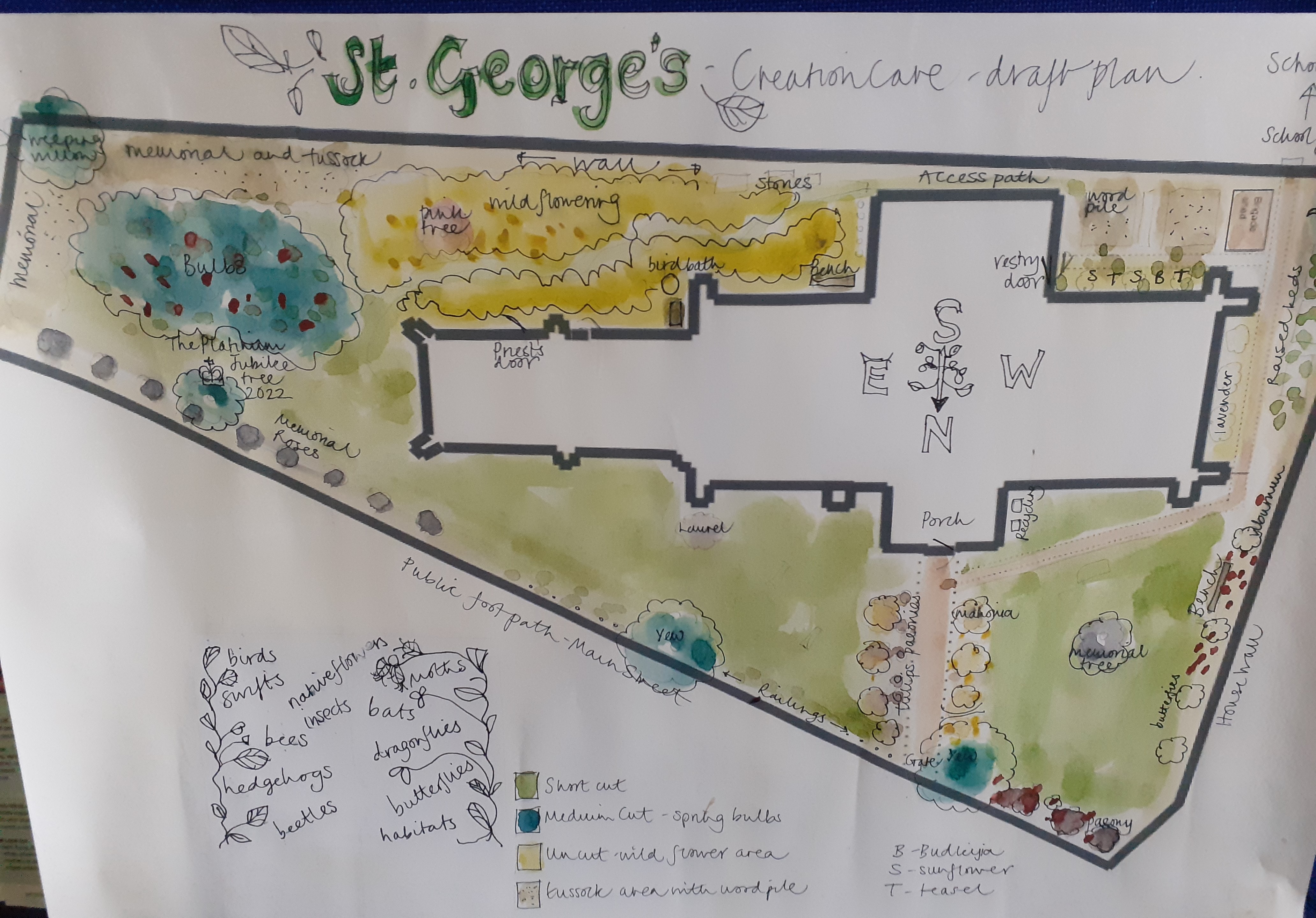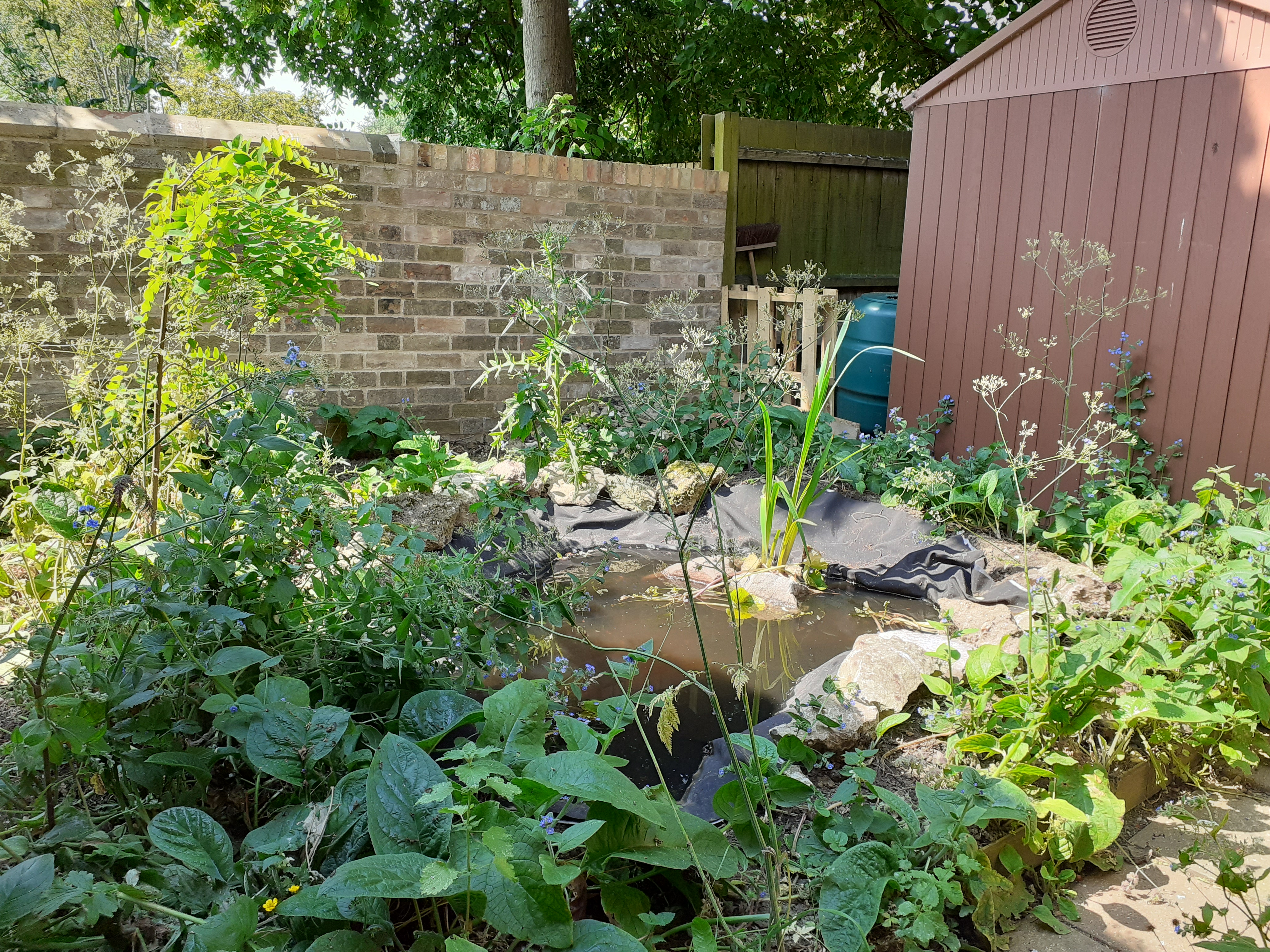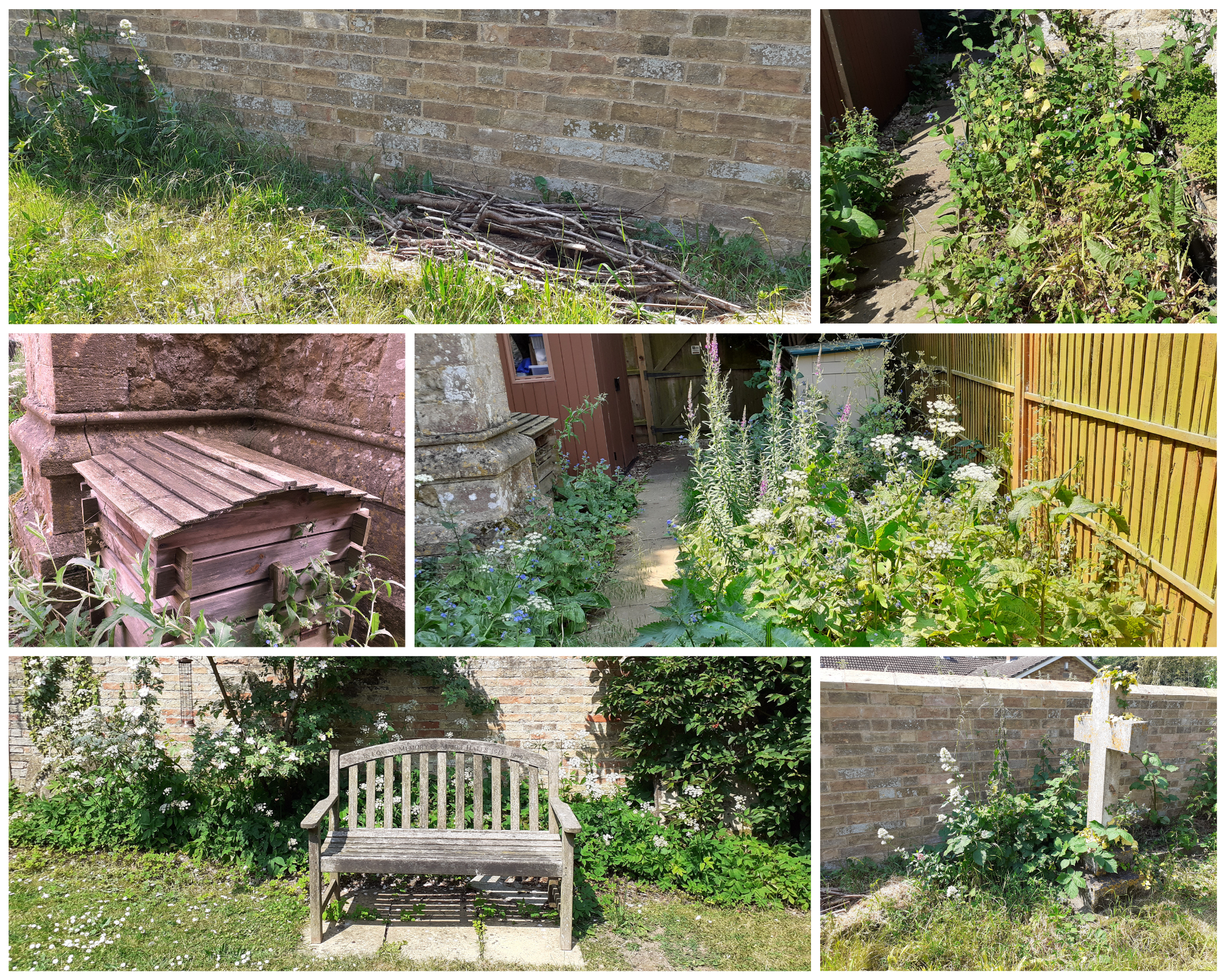St George's journey to achieving the Cambridgeshire Churchyard Conservation Award from the Wildlife Trust started when volunteer Sarah Martin was asked to become an eco-champion by a former church warden.
A Creation Care Team was established at St George’s Church in Little Thetford, with the aim to improve habitats for wildlife in the churchyard, and quiet spaces for people to enjoy the peace and beauty of nature. Sarah contacted several people to give talks to the team. Diana Cook, a volunteer from the Cambridgeshire wildlife trust, told them all about the Churchyard Conservation Award. A talk by Howard Jones from New Life on the Old West focused on ponds, which inspired them to explore the possibility of creating a small wildlife pond at the back of the church, and Dick Newell, a global authority on Swifts from nearby Coveney church, gave a talk about encouraging Swifts to nest at the church, leading to the addition of Swift boxes.
 Inspired by Diana‘s presentation about the Churchyard Conservation Award, Sarah started off by making a simple map of the churchyard, showing the proposed different mowing areas. Later, a talented artist in the congregation turned that simple map into a work of art, that was on display in the church to explain the project to others.
Inspired by Diana‘s presentation about the Churchyard Conservation Award, Sarah started off by making a simple map of the churchyard, showing the proposed different mowing areas. Later, a talented artist in the congregation turned that simple map into a work of art, that was on display in the church to explain the project to others.
Sarah says "The key to the success of the award is to bring on board whoever cuts the grass, so that they can be involved in managing the grass cutting regime.".
The wildlife trust have produced a template management plan that can help churches in planning their mowing regime and other elements of the award. The mowing regime should always include collection of the grass cuttings.
A project reestablishing the village pond in Little Thetford had recently been completed by charity New Life on the Old West, with volunteer Howard Jones giving a talk about the project to the Creation Care team.
 Sarah then had the idea to create a small wildlife pond in the churchyard. She engaged with the diocese to obtain all the correct permissions and worked with John Morgan from the DAC who helped her through the faculty process.
Sarah then had the idea to create a small wildlife pond in the churchyard. She engaged with the diocese to obtain all the correct permissions and worked with John Morgan from the DAC who helped her through the faculty process.
Sarah worked to address concerns raised regarding the safety of the pond, particularly for young children, producing a full, detailed risk assessment, and ensured clear signage has been erected at various points in the churchyard.
- A pond or a water feature are a key element in the Churchyard Conservation Award scheme, and should always include stones which will clear the top of the water source, to allow wildlife and insects to egress the water lest they become trapped.
- Benches for the churchyard at St George's were paid for by a grant from Tesco to allow people to enjoy the space in comfort.
- Log piles can be seen around the churchyard, providing shelter for a variety of insects and small mammals.
- Nettles are encouraged in a managed area of the churchyard as they provide a hugely important nectar source for insects and butterflies.
- Water butts were installed on some of the downpipes around the church, this again required the input of the DAC, who were very encouraging and helpful throughout the project.
- A compost heap doesn’t necessarily need to be formally maintained, a pile in one corner of the churchyard will often suffice.
- Areas of spring flowers, summer flowers, short grass, uncut, grass and paths cut through long grass provide a variety of habitats for insects to thrive.
- Older trees provide nesting sites for birds, seed bearing plants, plants with berries or fruit, and flowers for nectar, ensure a variety of food sources for birds, small, mammals, and insects.
- No chemicals are used in the management of the churchyard.
- The management plan is clearly displayed to help the congregation and visitors understand that the churchyard is being managed for biodiversity.
Working towards the next stage of the Churchyard Conservation Award, Sarah recruited two more members of the congregation to make a A4 laminate guide to the churchyard in order to apply for the silver award. The guide included IDs for plants, flowers, wildlife and birds that are potentially found in the churchyard. Encouraging and engaging with the congregation in recording sightings of the various species to provide ongoing evidence of biodiversity for the award is an important part of the process. Children (and adults) can help to create insect hotels, to plant herbs and seed-bearing plants like teasels and sunflowers to provide food for birds over the winter.
Bat boxes or Swift boxes are another element you could think about adding to your churchyard. Sarah contacted Dick Newell from Coveney Church, to come and talk about Swifts, and how they could attract them. (Dick is a lifetime bird watcher with over 60 years as an RSPB member. He is retired and now devotes his time to devising ways to help swifts thrive including designing nesting boxes.) At St George’s, Swift boxes have now been installed in the eaves of the church - and residents are awaited, hopefully this Summer!
As your church journeys towards increasing Biodiversity through the Churchyard Conservation Award, don’t forget to take lots of photos at different seasons. Engage the congregation and local community - schools, youth groups, gardening groups - in surveying the species of insects and plants that can be found in the churchyard. Both of these will provide evidence of monitoring which is needed for the award.
Diana Cook from the wildlife trust would be delighted to come and visit churches to give advice on achieving the award. Please get in touch with her on Diana.Cook@wildlifeBCN.org

